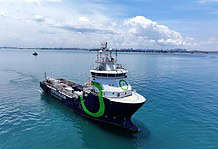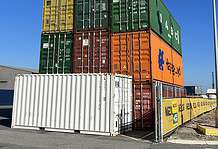All images: Whitehaven Coal
BY: JESSICA CUMMINS
The largest high quality coal producer in the Gunnedah Basin, Whitehaven Coal, finds itself perfectly positioned to capitalise on rising demand from Asian markets. Against the backdrop of coal prices sitting at seven year highs, The Australian Mining Review speaks with chief executive Paul Flynn about Whitehaven’s outlook following its most important acquisition.
FY17 results for Australian coal producers placed Whitehaven as one of the industry’s leaders, with a significant jump in net profit from $20.5 million to $405.4m year on year. Now, with met coal prices at seven year highs, Whitehaven remains on track for a record financial result in FY18.
June Quarter ROM production of 5.9 million tonnes boosted Whitehaven’s FY18 production to 22.9mt, in line with the previous year.
Maules Creek produced 2.9mt ROM coal for the quarter and a record 11.0Mt ROM coal, up 13 per cent for the year. The Gunnedah open cuts delivered record saleable coal production of 5.4Mt, up 12 per cent and coal sales of 5.3mt, up 16 per cent from the previous year.
Whitehaven has the kind of rare experience and determination that comes with bringing large operations into production, as developer of two of the largest tier one coal mines in Australia, Narrabri and Maules Creek.
“I have seen a number of projects go through prolonged approval processes,” Whitehaven chief executive Paul Flynn said.
“Maules Creek was the same. It went through quite a significant approvals process as well; it took over a thousand days to get approved.”
“But with determination and the right project – it really comes down to the project itself – the quality of it and the proposition that it represents, you should be able to get through.”
Whitehaven Coal chief executive Paul Flynn.
Maules Creek and Vickery
Mr Flynn said the record FY18 production result for Maules Creek, along with continued strong performance of the Gunnedah open cuts, helped to achieve sales within the guidance range.
The company is on course to ramp up production at Maules Creek to 13mtpa in to the 2020 financial year.
“Maules Creek certainly taught us a lot – the challenge for Vickery and Winchester South is that there’s an obvious and really good benchmark that we have created with Maules Creek,” Mr Flynn said.
“It was one of the most capital efficient developments of any large scale coal mine in the last 10 years in Australia.
“That is a benchmark that we seek to apply to our Vickery project, in particular, which is next cab off the rank – given that it will be developed at a time when the market is running pretty hot as opposed to Maules Creek, which was constructed during the bottom of the cycle.”
He said construction at Vickery is expected to begin in early 2020, allowing 18 months for both State and Federal approval. This will coincide with Maules Creek hitting its 13mtpa production rate.
Mr Flynn said the Vickery extension was one of the most significant investments currently underway in North West NSW.
“The project, if approved, will cement our standing as the single largest private sector employer in the area,” Mr Flynn said.
“It will generate around 500 jobs during the construction phase and roughly 450 jobs during operations, the majority of which will come from the local communities of Gunnedah, Narrabri, Boggabri and surrounding areas.
“It will also create fresh opportunities for Whitehaven to support local businesses and contractors, and generate more than $700m in royalties for the people of NSW to help provide important services like education, health and transport infrastructure.”
Winchester South
In June, Whitehaven purchased the remaining 25 per cent of the undeveloped Winchester South project, after paying $US200m for Rio Tinto’s 75 per cent share in late May.
30km from Moranbah in the Bowen Basin, the large Winchester South project contains 356 million tonnes (mt) of resources, and is expected to produce both coking and thermal coal once developed.
Mr Flynn said Winchester South, discovered in 2008, was a well understood project amongst industry players.
“Many players had made overtures to try and buy it from Rio Tinto, but we were particularly attracted to its low strip ratio, its placement in the centre of one of the best coal basins in the world – the Bowen Basin – and its close proximity to some very high quality mines,” he said.
“And of course we are attracted to putting more met coal into our portfolio. This project is a large scale opportunity, with infrastructure access right there on the tenement boundary.”
From an infrastructure perspective, Winchester South ticks all the boxes. It sits close to one of the main rail lines in the Goonyella System as well as the nearby Queensland electricity power grid.
Mr Flynn said the company sees the acquisition as another growth opportunity beyond Vickery, as demand for both metallurgical and thermal coal is expected to grow through to 2040 and 2035 respectively.
Whitehaven has commenced integrating Winchester South into its Technical Services and Long Term Mine Planning team, and started the process to recruit a project director to guide the project through to approval, construction, development and operation.
Once developed, the mine will have a life of around 20 to 30 years at an annual production rate of between 7.5mtpa to 15mtpa.
“We’ve learnt over the last cycle that you must invest in the local people.”
Outlook
There are good things happening within the coal space, but more work needs to be done to change the public narrative around the resource, Mr Flynn said.
“It’s definitely the case for coal, but it’s the case for businesses generally in this day and age,” he said.
“Coal is no stranger to [negative discourse] but I do believe the industry has responded to try and highlight the positive aspects of coal and its role in the future.
“I’m sure the current public discourse about our energy market and the cost of electricity at home has focused people on the natural advantages that coal has.”
Whitehaven is currently seeing skills shortages “on all levels” from technical skills, engineering skills to trades as well as in a training capacity, Mr Flynn said.
“For us, as a company and as an employer, what we’ve learnt over the last cycle is that you must invest in the local people,” he said.
“The sense of connection and loyalty with your company then tends to be stronger and people become ‘stickier’ as employees.”









































